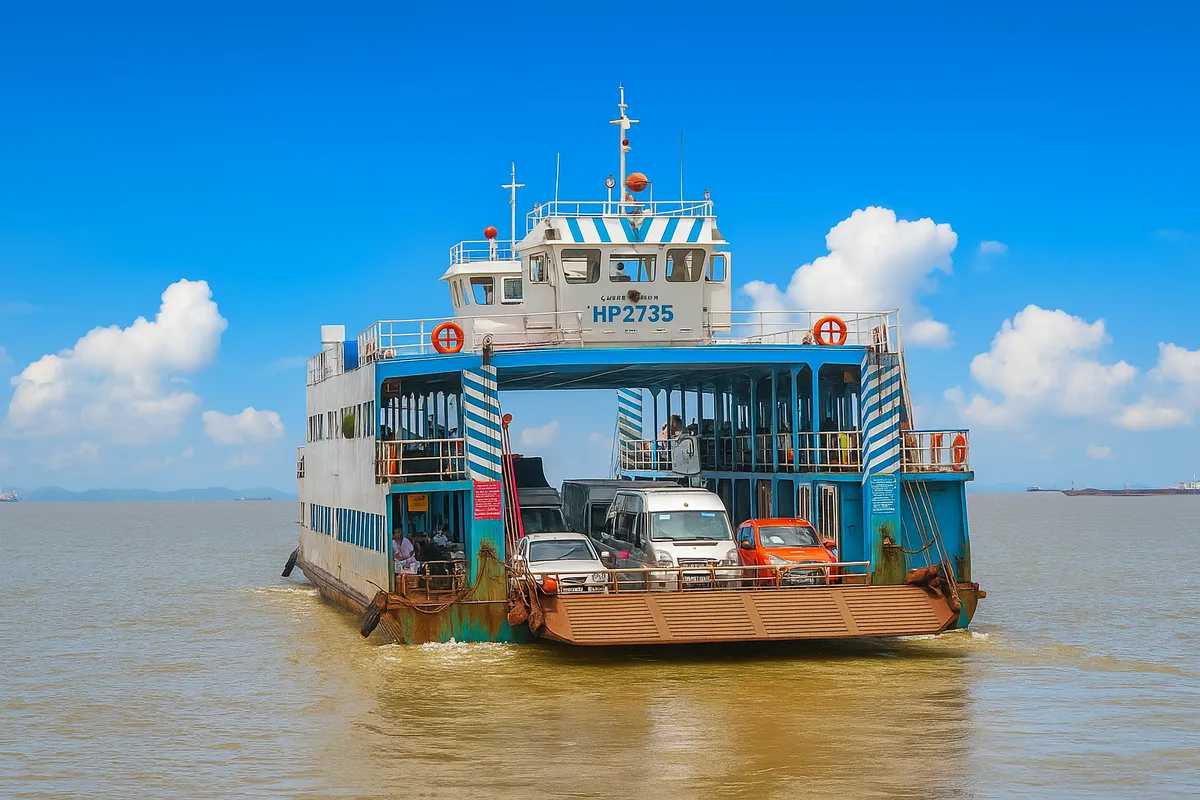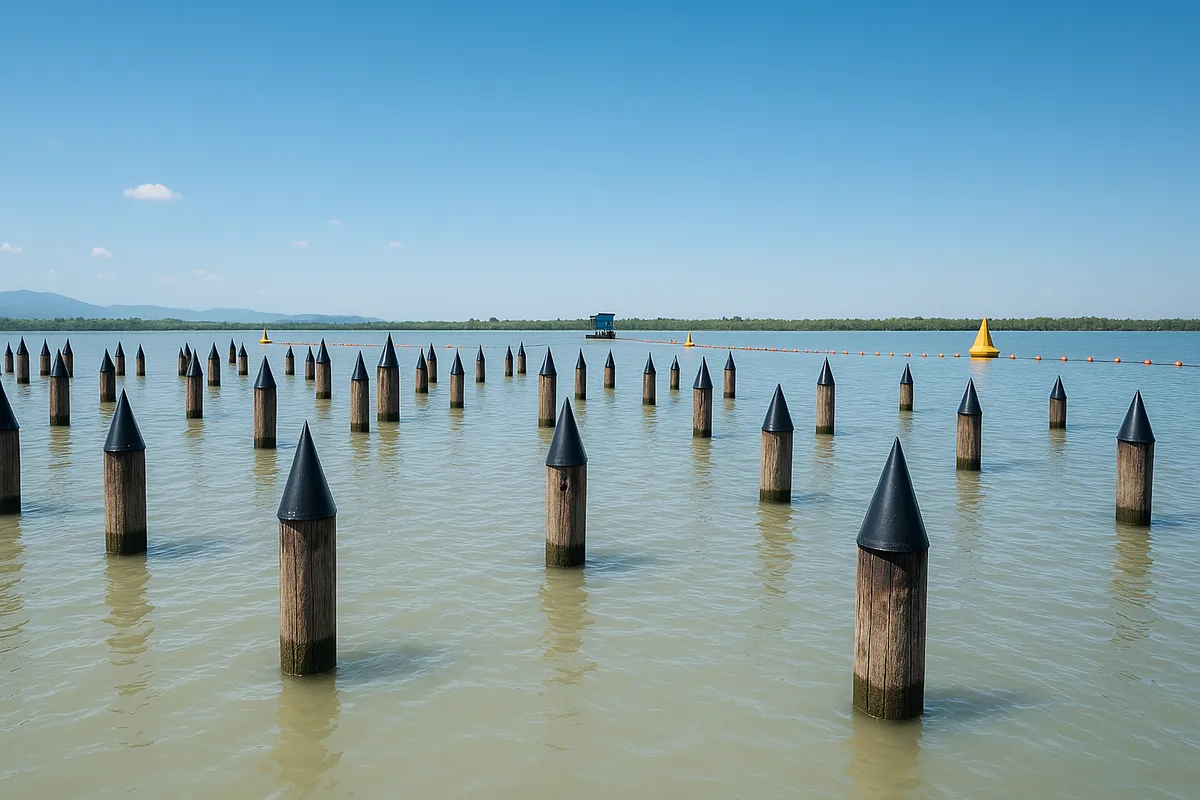Officially adjusting Cat Ba ferry schedule to serve tourism
- Monday, Jun 09, 2025, 09:13 (GMT+7)
Officially adjusting Cat Ba ferry schedule to serve tourism
From June 9, 2025, the Dong Bai – Cai Vieng ferry route connecting mainland Hai Phong and Cat Ba Island will officially operate under a revised schedule, which will remain in effect until August 31, 2025. This move, initiated by the Hai Phong Department of Transport in coordination with the Cat Hai District People's Committee, aims to ease travel congestion during the peak tourist season while enhancing service capacity and providing greater flexibility for both tourists and local residents.
Under the new schedule, the ferry will operate a total of 26 trips per day. Departures from Cai Vieng begin at 5:00 AM and continue until 5:30 PM. In the reverse direction, from Dong Bai to Cat Ba, services run from 5:30 AM to 6:00 PM, with a frequency of one trip every 30 minutes.
This adjustment comes as Cat Ba tourism enters its busiest period of the year. In the first five months of 2025 alone, the island welcomed over 1.1 million visitors, marking a nearly 24 percent increase compared to the same period last year. Most tourists came from northern provinces, especially Hanoi, Quang Ninh, and Hai Duong, often opting for short weekend trips of two to three days. The influx of travelers on Saturday mornings and Sunday afternoons has repeatedly overwhelmed the transport system, with reported ferry wait times stretching over two hours.
The new schedule is not just a temporary solution but part of a broader plan to upgrade the transportation infrastructure supporting Cat Ba tourism. Hai Phong authorities have already approved a renovation project for the Dong Bai and Cai Vieng ferry terminals, with a total investment of over VND 98.5 billion. The upgrades focus on dredging navigation channels, expanding waiting areas, improving access roads and parking lots, and enhancing the safety of ferry docking points. A portion of the project has been operational since April to accommodate the summer tourist wave, with the remainder scheduled for completion in September 2025.
According to many tourists, long wait times at the ferry terminals are among the top concerns impacting their experience when visiting Cat Ba. On holidays like April 30 or during summer weekends, even with increased service frequency, the terminals remain overcrowded. Some travelers have reported having to queue as early as 4:00 AM at Dong Bai just to catch a ferry before 8:00 AM. On Facebook travel groups, users often comment that although the drive from Hai Phong city center to the terminal takes only 30 minutes, the entire trip can triple in duration without proper timing.
In terms of cost, the Dong Bai – Cai Vieng route maintains stable fares, ranging from VND 10,000 for pedestrians, VND 45,000 for motorbikes, and about VND 190,000 to 330,000 for cars with fewer than nine seats, depending on weight and time of day. Truck fees vary from VND 370,000 to 650,000, which is considered reasonable compared to the Tuan Chau – Gia Luan route operated by Quang Ninh province. However, during peak times, limited supply has forced many vehicle owners to wait hours or switch to alternative services costing up to three times more to stay on schedule.
In light of the growing tourism demand, maintaining this traditional public ferry service plays a vital role. It not only serves tourists but also ensures the transportation of goods and supplies to thousands of island residents. Relying solely on modern transport options like cable cars or express boats would create imbalances in cost, sustainability, and accessibility. Ferries remain the backbone of the island’s connectivity, and the updated schedule reflects a necessary shift toward better alignment with both resident lifestyles and visitor travel patterns.
However, the schedule change, while beneficial, does not fully resolve congestion during peak hours. One major challenge is the lack of an intelligent routing, forecasting, and coordination system at the terminals. A large volume of passengers tends to concentrate between 8:00–10:00 AM and 3:00–5:00 PM, leading to bottlenecks. Currently, there is no mechanism for advance ticket booking or vehicle quota management per time slot, leaving the trip distribution largely dependent on individual awareness and self-planning.
Another issue is the insufficient communication regarding the new schedule. Many travelers rely on outdated information or fail to access official updates. Although the Department of Transport has published the schedule on its website and major news outlets, the message has not reached the broader audience effectively—especially out-of-province tourists, seniors, or those less tech-savvy. As a result, off-peak hours remain underutilized while rush hours still suffer overloads.
Additionally, there is a lack of synchronization among different transport modes to Cat Ba. The Tuan Chau – Gia Luan route, managed by Quang Ninh, continues to operate independently, but its timetable is not coordinated with Hai Phong's system. This causes overlap and fragmentation in visitor flow, leaving many confused when choosing a route. Meanwhile, the Cat Hai – Phu Long cable car, despite being fast and modern, does not support private vehicles, limiting its ability to replace ferries for those traveling with cars or motorcycles.
To enhance the effectiveness of the revised ferry schedule, experts recommend implementing an integrated electronic ticketing system that allows passengers to reserve seats, select times, make payments remotely, and receive alerts during peak hours. This approach, used successfully at many international ports, reduces wait times while improving transparency and flow control. Complementary to this, digital signage at terminals and mobile applications displaying upcoming departures, available capacity, and estimated wait times would provide much-needed real-time updates.
Beyond technological upgrades, collaboration among ferry operators, traffic regulators, and tourism stakeholders is also crucial. The schedule should be updated flexibly based on weather, vehicle density, and real-time traveler flow. Standby ferries during weekends or long holidays could help absorb sudden surges. Special support for elderly passengers, children, or people with disabilities—especially during crowded hours—should also be considered.
Looking long term, adjusting the ferry schedule is more than just a transportation tweak. It signifies a shift in how Hai Phong and Cat Hai approach tourism infrastructure planning. As domestic tourism continues to surge, Cat Ba requires an access system that is efficient, sustainable, and inclusive. Investing in ferries—a seemingly traditional but deeply valuable transport method—is a way to balance rapid development with high-quality experiences.
It also serves as a reminder that tourism development should not rely solely on the newest or flashiest options but must include thoughtful improvements to foundational services. A journey to Cat Ba does not begin upon arrival at the island—it begins the moment a traveler steps onto the ferry. If well managed, this can be a memorable part of the trip rather than an obstacle. The schedule revision starting June 9, 2025, therefore, is not merely a seasonal fix but a cornerstone for building a more effective, science-driven, and community-focused tourism transport future.

 CHECKIN.VN
CHECKIN.VN








Share on